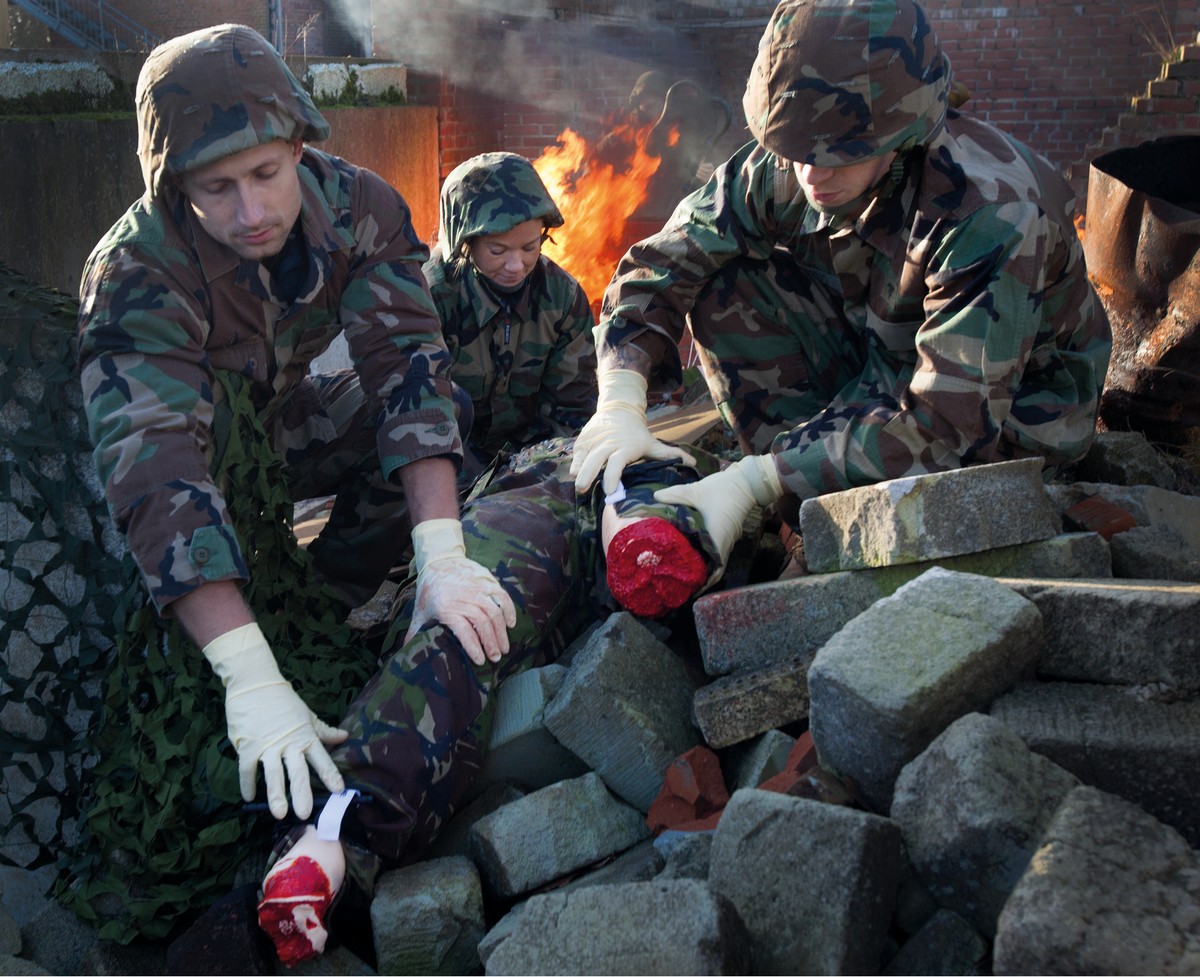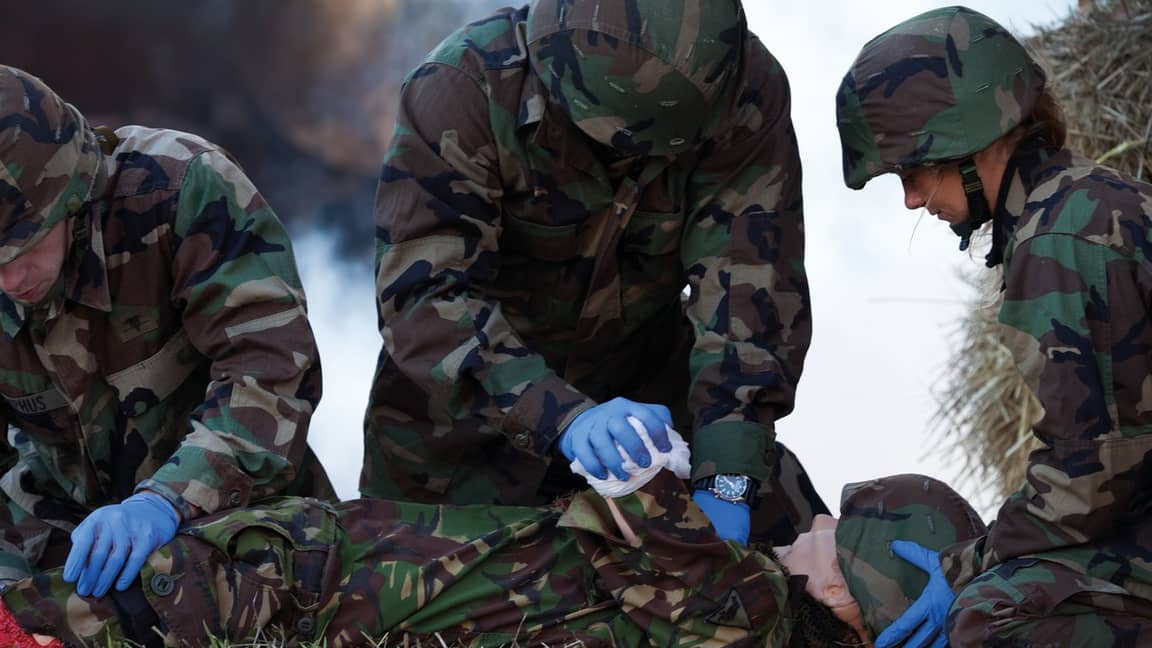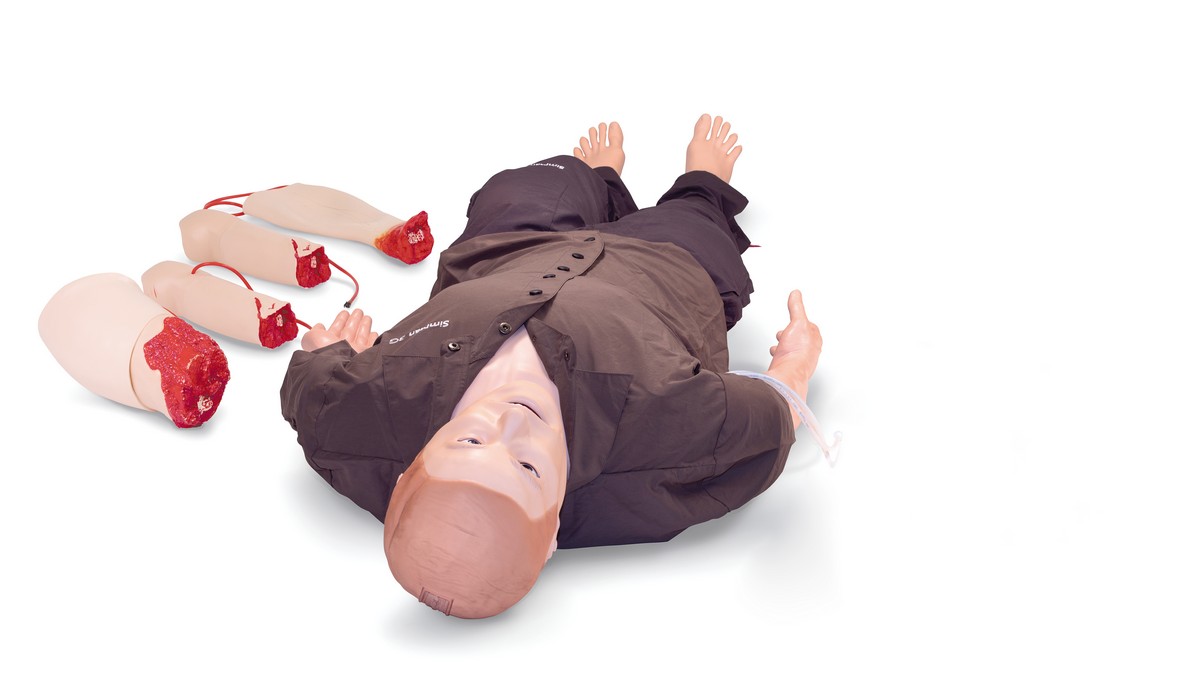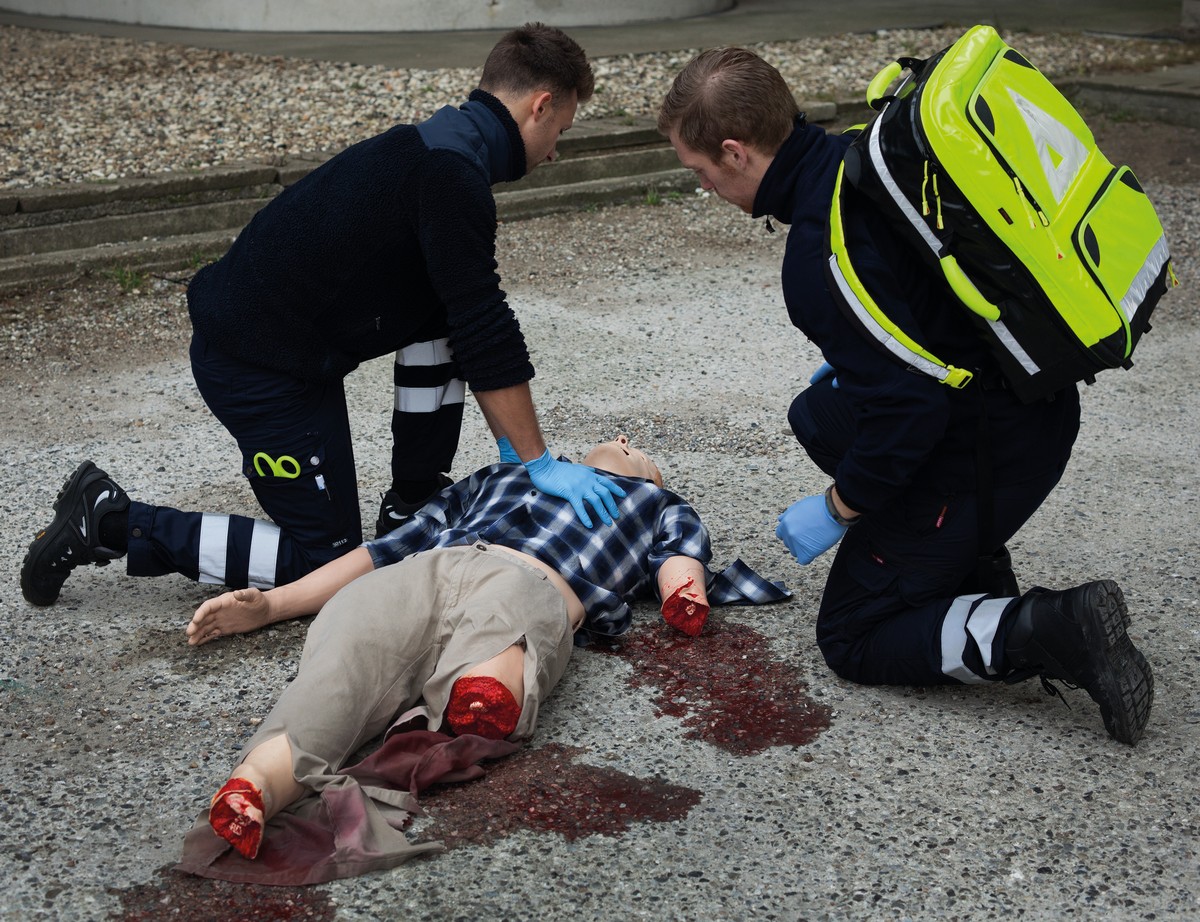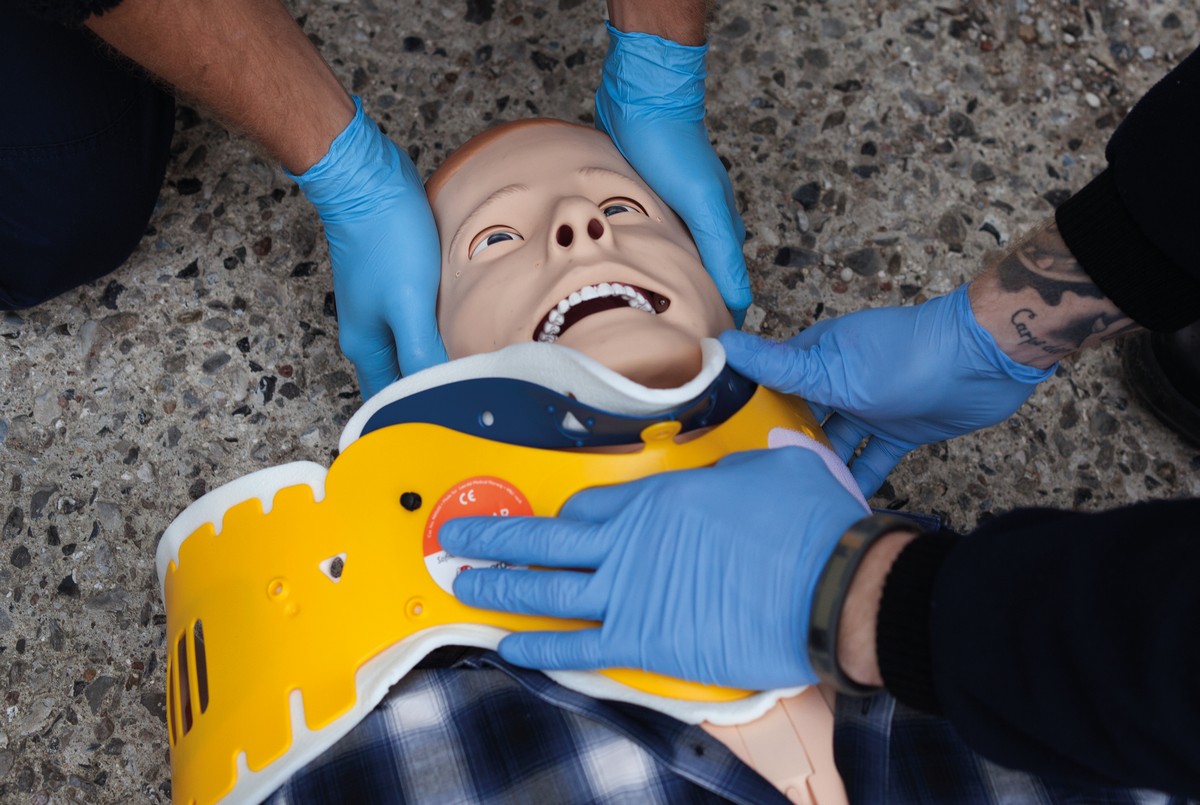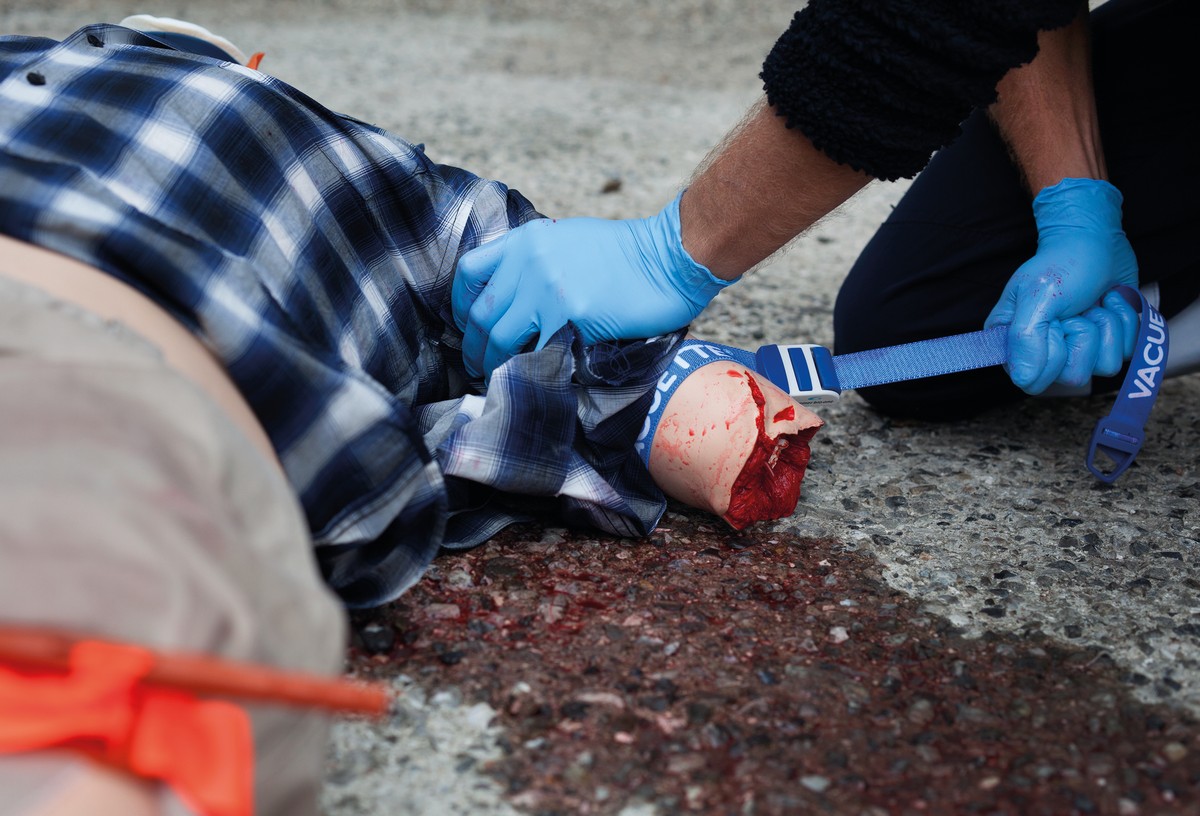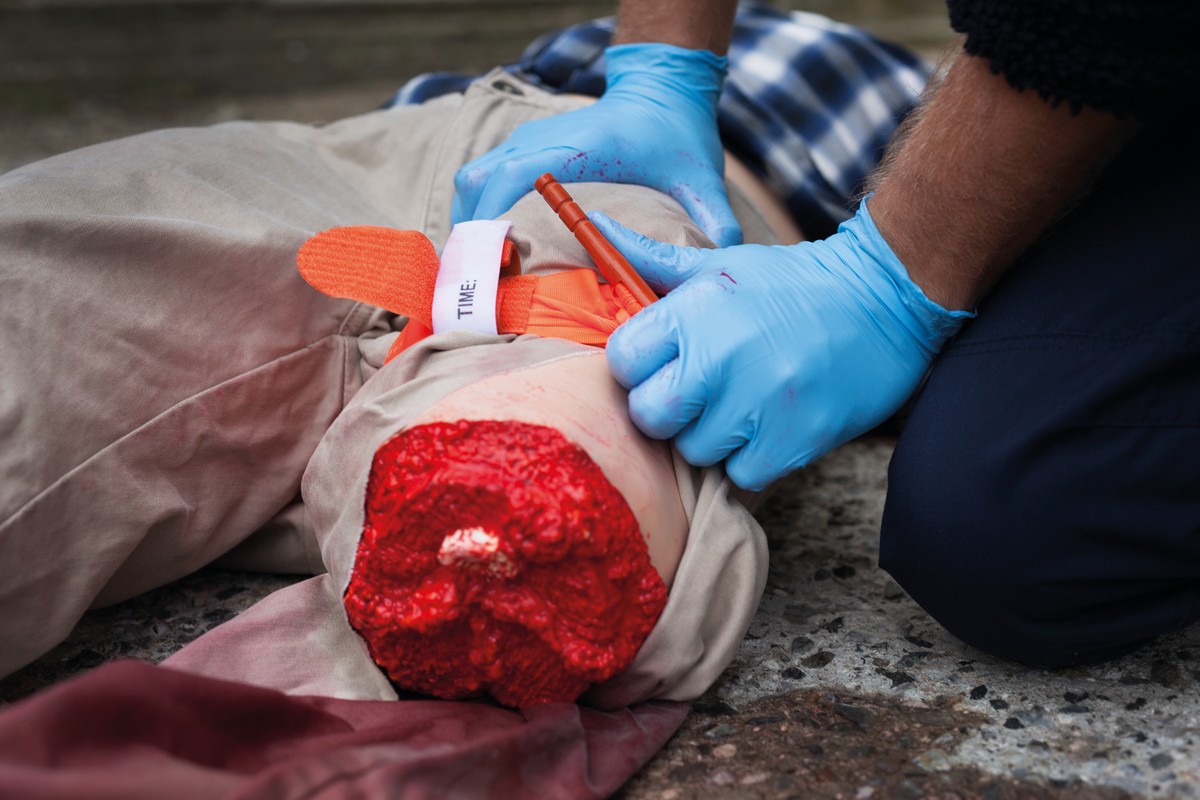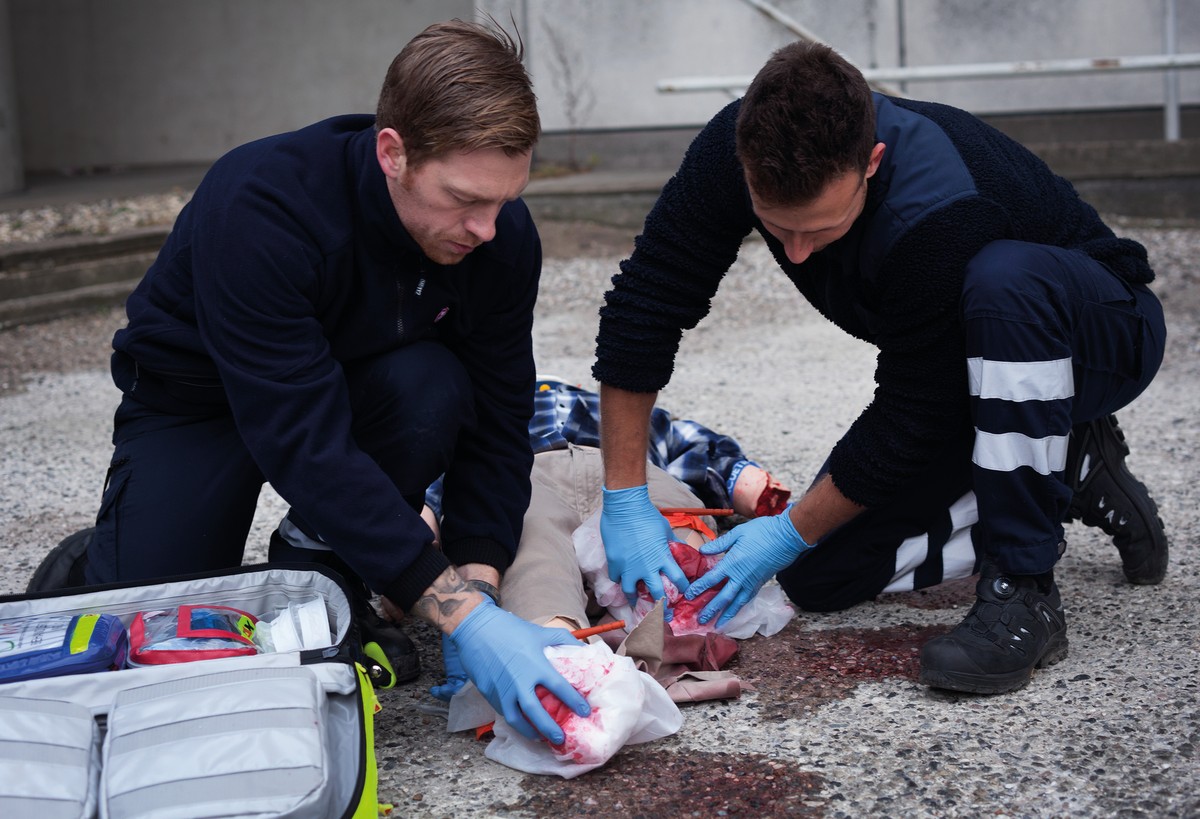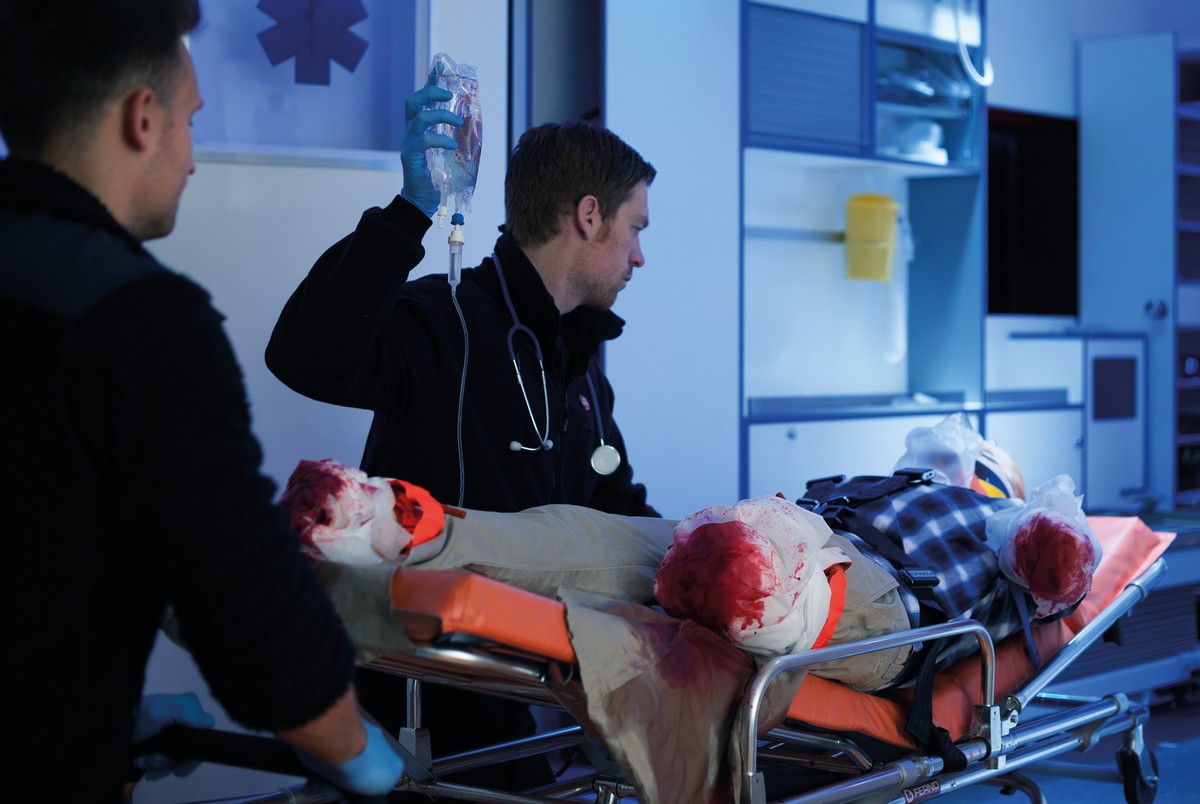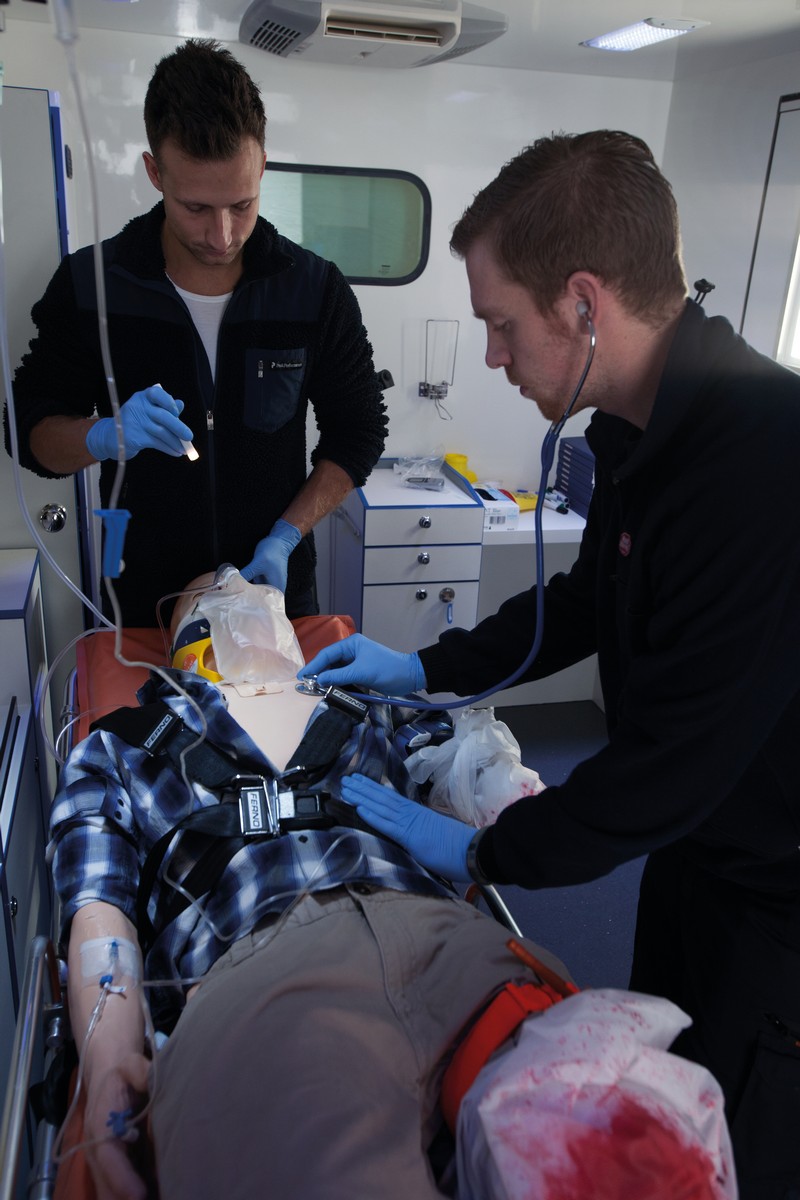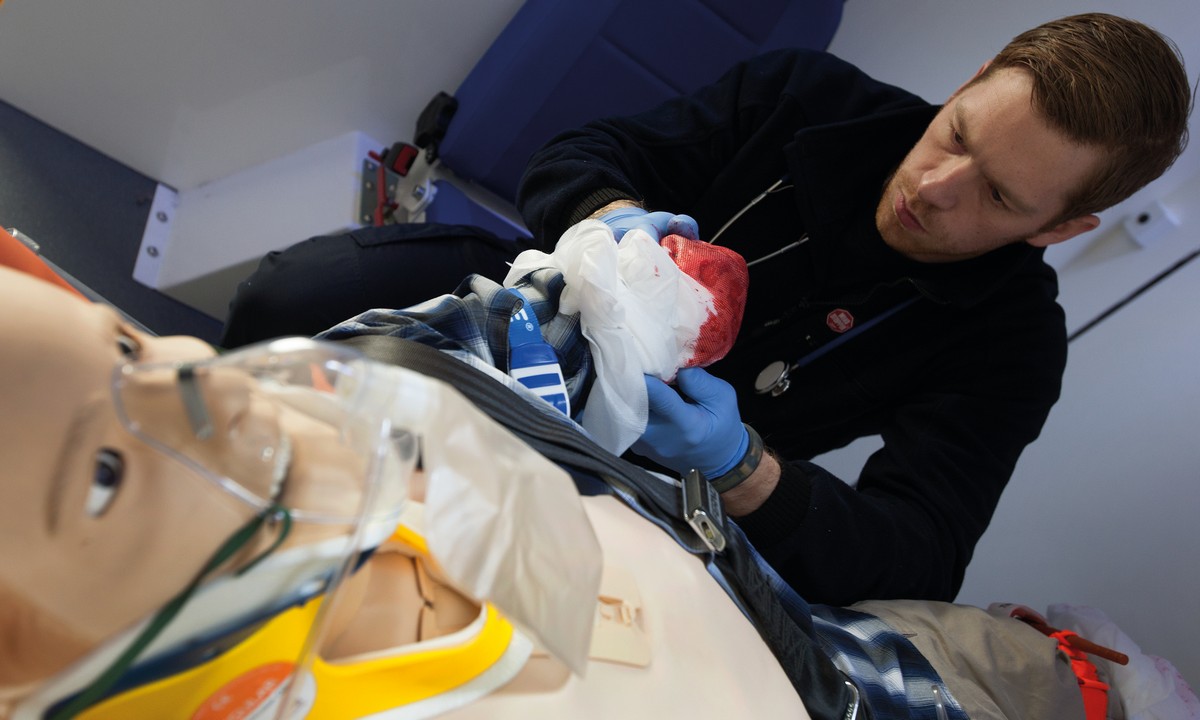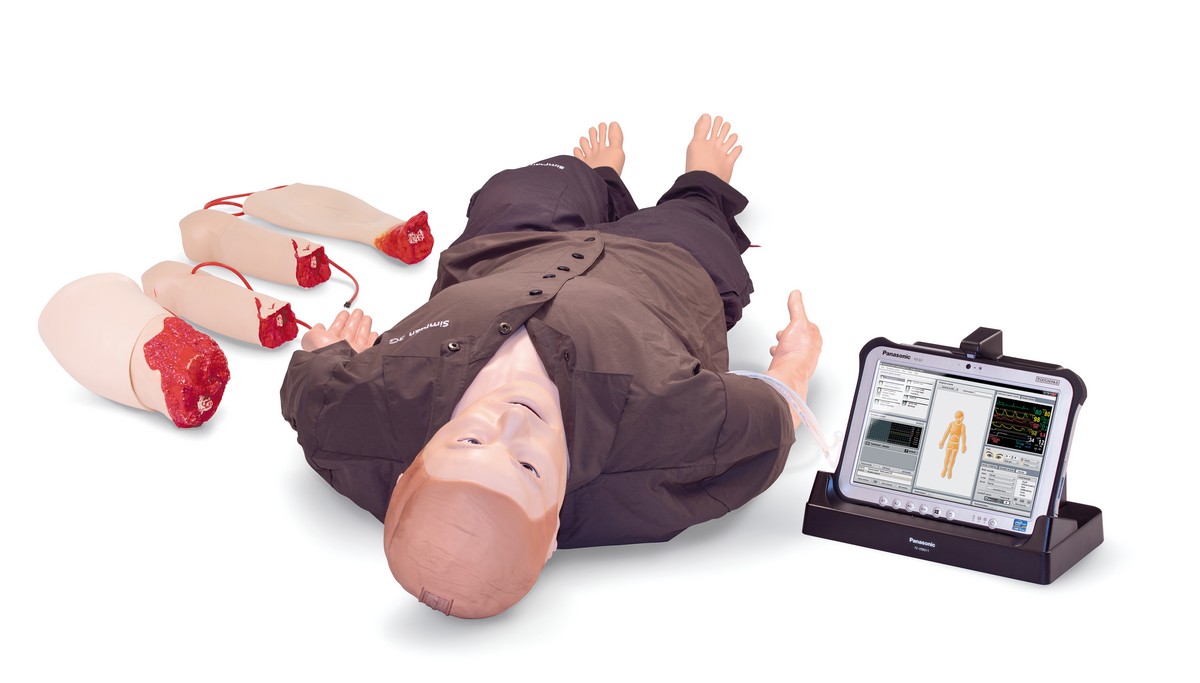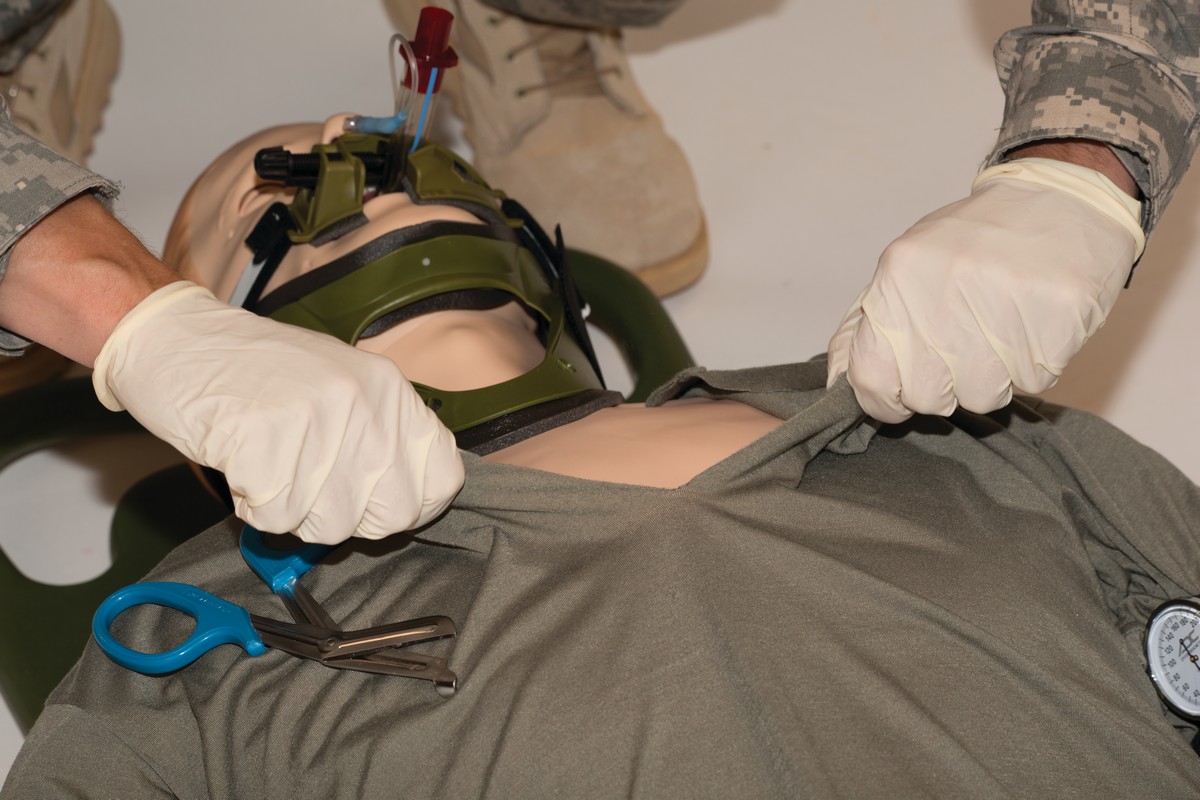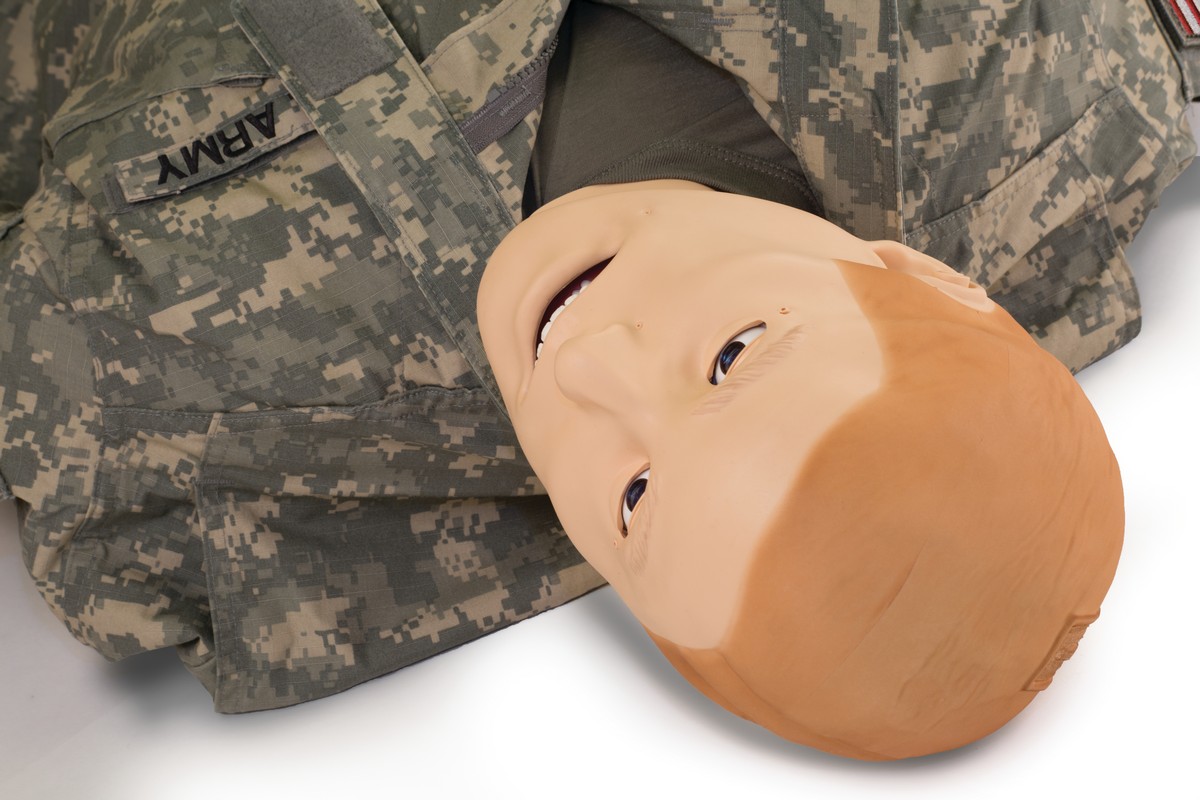Create teams that perform at their best
Perform high-risk tasks in a no-risk environment
Mental toughness and teamwork are both essential in a combat situation. Mental toughness is built from experience and teamwork is born from sharing and mastering those experiences together with others.
Scenario-based training using SimMan 3G Trauma perfectly combines the need to identify skill improvement areas for individuals as well as those essential for a team to function together, such as communication, behavior, and leadership.
